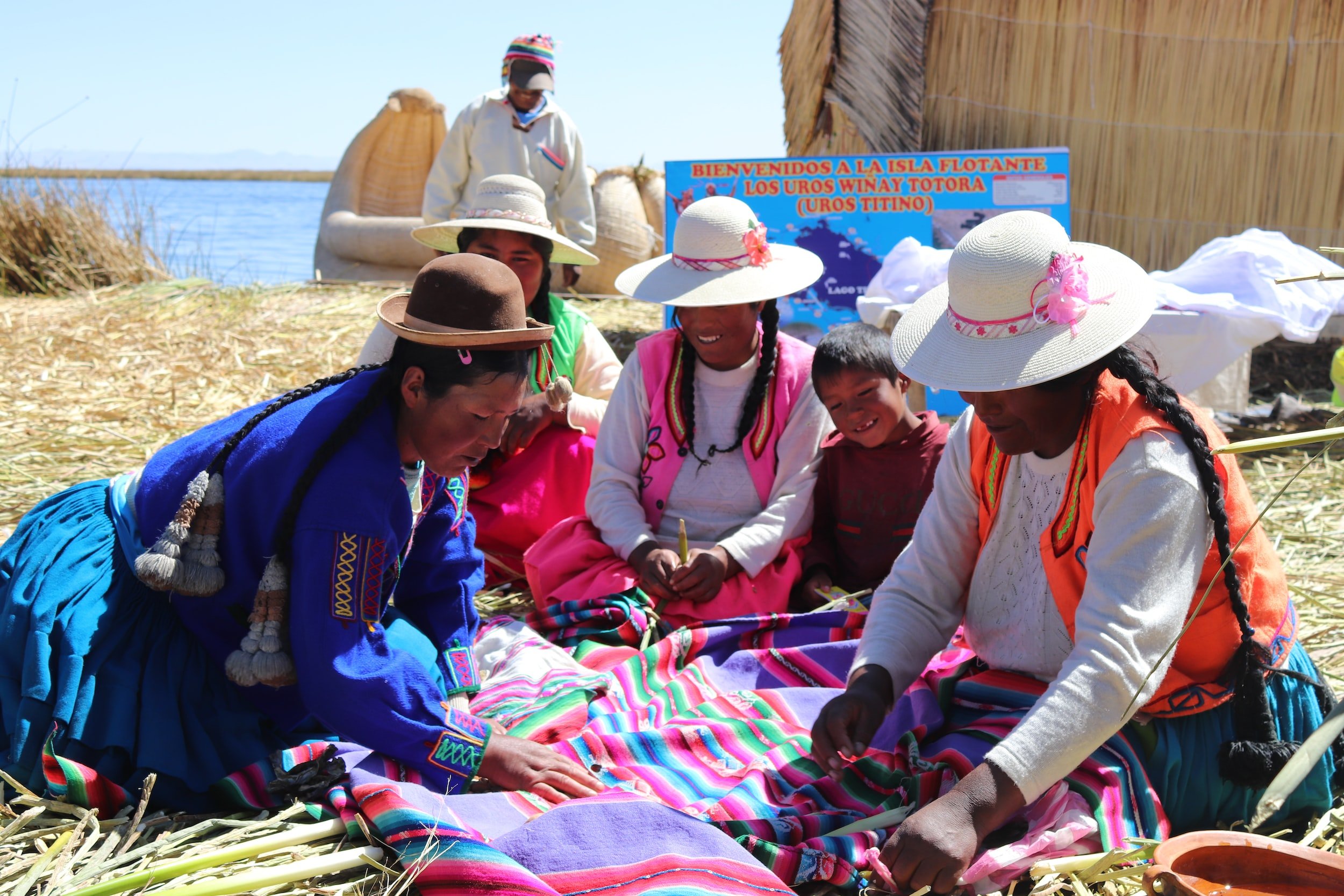Research Across Languages: Translating Data
The September 2022 Methodspace focus is on culture and research. Sometimes crossing cultural boundaries means collecting data from people who speak a language different from your own.
This excerpt from the SAGE Research Methods Foundations entry by Gawlewicz (2019) offers reasons why careful attention is needed when translating interview or survey questions, or narrative data:
Translation tends to be falsely assumed to be an objective and neutral process, while interpreters and translators tend to be falsely considered simply as “transmitters” or “technicians” who produce a text or a data set in a different language (Wong & Poon, 2010). In reality, translation is far from being objective or neutral, and interpreters and translators play a far more important role in shaping qualitative research than is often assumed.
Translation is a multidimensional process involving different epistemological layers and presents many methodological and ethical problems. It is not merely a direct transfer from one language to another. Rather, it is an interpretative act and involves assigning meanings to words in source and target language.
Meaning is constructed in and through language rather than expressed by it; language is not just a tool to communicate (Simon, 1996; Spivak, 1992). Words carry sets of unique cultural, social, and political assumptions and meanings. They are always imbued with and relate to highly contextualized and local realities. They also convey the speaker’s assumptions about the social world, their emotions and feelings, and relate to their unique position and identity; they are part of “who we are.”
Translation requires making “interpretative decisions” (Riessman, 2008) about how to deconstruct and reconstruct these meanings and assumptions and how to represent people and concepts in a target language. In other words, it involves translating identities and lives rather than just words (Simon, 1996). For example, the word man can be translated as “male” (as in man versus woman), “adult male” (as in man versus boy), or “human being” (as in man versus other organism) depending on the context and the translator. The politically loaded term queer can be translated as a “homosexual man” (as a derogatory term), “someone who identifies as LGBTQI” (as a reclaimed “neutral” or positive term), “someone who does not correspond to heterosexual or gender norms”, or “someone who is strange/odd.” Even greater challenges are posed by the translation of metaphors, idiomatic expressions, proverbs, jokes, puns, catchphrases, or (geo)political concepts which are commonly used to capture depth and richness of lived experience but vary from culture to culture and are language-specific (for details and good examples, see Filep, 2009).
The key difficulty in translating qualitative research is gaining the so-called conceptual equivalence (i.e., comparability of meanings between the two languages and cultures; Phillips, 1959). This is only possible when the translator has an in-depth knowledge of both source and target languages and cultures. Maintaining conceptual equivalence means that political, social, and cultural connotations and personal or other culture-specific assumptions the research participant makes are made explicit to the prospective reader. For this reason, translation process is viewed as a hybrid cultural production; it creates a “hybrid,” a third space between two cultures (Bhabha, 1994).
Translation is also a socially driven process in a sense that it is affected by the socialization of those who translate. Interpreters and translators undergo a complex learning process (i.e., socialization) that affects how they understand and translate concepts and meanings. The implication of this is that translated data are to a certain degree “processed”: they are filtered through the individual biography, lived experience, sociolinguistic competence, and linguistic preference of the translator. Therefore, translation of qualitative research is closely linked to the issue of positionality and reflexivity, which acknowledge that an individual’s position within the social world affects the way that individual views it and impacts the research process (refer to the following section).
Consequently, there exists no single “correct” translation (Temple & Young, 2004). Translated data are never exactly the same as data in the source language. Decisions about how to represent people, cultures, and concepts always have epistemological and ethical implications. Translation is essentially about making choices; it is intrinsically consequential and, as such, is a political act (Spivak, 1992).
Gawlewicz, A., (2019). Translation in Qualitative Methods, In P. Atkinson, S. Delamont, A. Cernat, J.W. Sakshaug, & R.A. Williams (Eds.), SAGE Research Methods Foundations. https://dx.doi.org/10.4135/9781526421036779982
Examples and recommendations
These articles discuss ways to address the need and process for translating data, or working with a translator. While these articles discuss qualitative studies, similar strategies can be used with survey or other data used in quantitative or mixed methods studies.
Amenador, K. B., & Wang, Z. (2022). The Translation of Culture-Specific Items (CSIs) in Chinese-English Food Menu Corpus: A Study of Strategies and Factors. SAGE Open, 12(2), 21582440221096649.
Abstract. This study investigated how culture-specific items (CSIs) are translated in the Chinese-English food menu corpus. This overarching aim was divided into two specific objectives: identifying which procedures prevail in translating cultural items and determining what factors impinge on the selection of specific procedures. The analysis of the corpus was done descriptively and by utilizing “Sketch Engine.” The theoretical issues addressed in the study included the scope and definition of CSI, the categorization of procedures presented in the data for CSI translation, and the place of food items within the category of CSI. Results of the study indicated that neutralizing strategy is employed more than foreignizing and domesticating strategies, with the latter being last in descending order. The major factors identified were metonymical/metaphorical use of the CSI, brand, polysemous nature of source CSI, degree of cultural markedness, and false relationship of the ST item with the TT item. Correlations between some factors and procedures were moderately strong as their values were above 50 out of the ideal value (100). However, other correlations were weak and therefore requires further investigation.
Choi, J., Kushner, K. E., Mill, J., & Lai, D. W. (2012). Understanding the language, the culture, and the experience: translation in cross-cultural research. International Journal of Qualitative Methods, 11(5), 652-665.
Abstract. Achieving conceptual equivalence between two languages is a challenge in cross-cultural, cross-language research, as the research is conducted in a language that is not the researcher's or research team's first language. Therefore, translation provides an additional challenge in cross-cultural research. The comprehension and interpretation of the meaning of data is central in cross-cultural qualitative analysis. The purpose of this article is to provide an overview of the translation process and explore some of the challenges, such as difficulties in finding a suitable translator, and the importance of communication between the researcher and the translator.
Lee, Y., & Sohng, K. Y. (2020). Translation and Cross-Cultural Validation of Korean Version of the Menstrual Distress Questionnaire. SAGE Open, 10(3), 2158244020951550.
Abstract. Given the increase in cross-cultural studies, there is a need for adequately translated and validated study instruments. Using instruments translated into participants’ native language can lower barriers to study participation and increase study validity. The purpose of this study was to describe the translation and validation processes of the Korean version (MDQ-K) of the Menstrual Distress Questionnaire (MDQ). The MDQ was translated into Korean through a forward-and-backward translation process, followed by expert review and pilot testing among 100 bilingual Korean students. The equivalence of MDQ-K to MDQ was tested through bivariate Pearson’s correlations and paired t tests. The psychometric properties of the MDQ-K were evaluated through internal consistency and construct validity (confirmatory factor analysis). The reliability of the questionnaire was good (Cronbach’s α = .96). The results of confirmatory factor analysis revealed an acceptable model fit to the data. Overall, the MDQ-K demonstrated acceptable psychometric properties, although paired t tests found significant differences (p < .05) between the MDQ and MDQ-K in the means of three items: “restlessness” (Item 22), “bursts of energy and activity” (Item 40), and “blind spots and fuzzy vision” (Item 46). Possible explanations for these discrepancies include the participants’ varying English proficiency levels, issues with understanding medical terminology, and absence of words with the same meanings in different languages. We also discussed possible deletion of questionnaire items through further factor analysis.
Rodriguez Espinosa, P., Pichayayothin, N. B., Suavansri, P., French, J. J., Areekit, P., Nilchantuk, C., ... & Heaney, C. A. (2022). Found in translation: Reflections and lessons for qualitative research collaborations across language and culture. International Journal of Qualitative Methods, 21, 16094069221101280.
Abstract. Qualitative scholars are increasingly engaged in global research where members of the research team are from different countries and cultures and have different primary languages. However, in-depth descriptions of how to work as a transnational team successfully and rigorously are scarce. Using a collaboration between Stanford University in the US and Chulalongkorn University in Thailand as a case example, we present the nuances and challenges experienced in this research collaboration, as well as the strategies employed to optimize the validity and reliability of the study findings. While we started our data analysis following a more typical qualitative analysis path, shortcomings of this approach brought us to explore an alternative, involving data review and coding by transnational coding sub-teams. This approach was better able to illuminate cultural nuances, address coding discrepancies, and bring forward discussions to enhance interpretation and validity of findings. We describe our collaborative and iterative approach, and highlight methodological implications around team composition, language nuances and translation challenges, our coding process involving transnational coding sub-teams, and important considerations for managing team dynamics (e.g., power and hierarchy) and the partnership process and engagement over time. Moreover, we highlight the benefits of integrating insiders and outsiders throughout the research process, from data collection to coding and interpretation. Our process can serve as a model for similar transnational teams seeking ways to fully benefit from cross-cultural research collaborations.
Jagosh, J., & Boudreau, J. D. (2009). Lost and found in translation: An ecological approach to bilingual research methodology. International Journal of Qualitative Methods, 8(2), 102-114.
Abstract. Translation issues emerged from a qualitative study, conducted in French and English, that gathered patient perspectives on a newly implemented undergraduate medical curriculum entitled Physicianship: The Physician as Professional and Healer. French-speaking participants were interviewed using a translated interview guide, originally developed in English. A major finding that francophone participants contested the idea of the physician-healer in a manner not witnessed among the anglophone participants. Consultation with multilingual health professionals was undertaken to explore whether the contestation was the result of poor translation of the word healer. This process confirmed that no appropriate French equivalent could be found. With hindsight, the authors emphasize the importance of pretesting translated research instrumentation. An ecological perspective on language equivalency is also emphasized, in which emergent linguistic discrepancies are viewed as opportunities for learning about the culture-language relationship.
Regmi, K., Naidoo, J., & Pilkington, P. (2010). Understanding the processes of translation and transliteration in qualitative research. International Journal of Qualitative Methods, 9(1), 16-26.
Abstract. There has been growing interest in the use of qualitative methods in health research amongst health and social care professionals. Good qualitative cross-cultural research analysis is not an easy task as it involves knowledge of different approaches, techniques and command of the appropriate languages. This article aims to discuss and explore some of the key processes and concepts involved in conducting translation and transliteration of qualitative research.
Turhan, Z., & Bernard, C. (2022). Challenges and strategies of translation in a qualitative and sensitive research. Qualitative Research, 22(3), 487–495. https://doi.org/10.1177/1468794121999003 (subscription needed)
Abstract. Key strategies and challenges of translating the interview data should be considered to do justice to the meanings and voices of the participants and remove misrepresentation. This article aims to investigate the key issues around translation in qualitative and sensitive research of the examination of the men’s engagement in domestic violence interventions in the UK. While many studies report on the importance of providing credibility to the meanings of the participants’ stories, there are limited studies that explore how researchers deal with difficulties and the techniques for translating the data. This research focuses on the key issues around the translation of interview data from Turkish to English. It highlights how the researcher’s position as a translator and a researcher impacted on collecting the data from the participants in a native language and presenting them in English. This addresses methodological and ethical questions that many migrant researchers might encounter during the translation of data.





















SAGE MethodSpace partnered with Prepared to Zoom into the meeting and hear selected delegates provide statements on the difficulties of research during global crises and suggestions on how stakeholders can work together better in the future. View the recording!